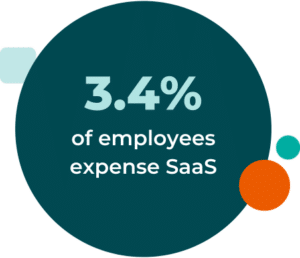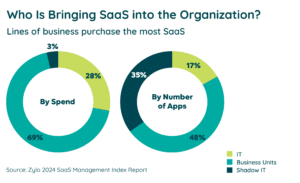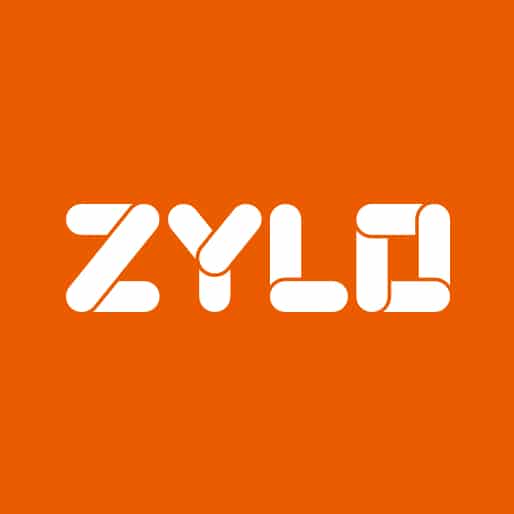Table of Contents
It’s no doubt that the explosion of SaaS over the last few years has proven that SaaS is the new future of software. Between 2015 and 2021, the average number of SaaS applications used by organizations increased by over 1200%. This growth and dependence on SaaS are also why enterprise organizations must now make application portfolio management a priority.
But as any IT leader can attest, managing your SaaS applications is a much different game than managing on-premise software. SaaS comes with its own unique challenges that are entirely new to application management. Thus, they require a strategy designed to address them.
That’s why we’re going to discuss exactly why effective enterprise application portfolio management must include SaaS.
The Nuances of SaaS Require Nuanced Solutions
An essential part of SaaS management is weaving it into the fold of an organization’s architecture. This means creating programmatic systems and policies that address the challenges of SaaS. In no small part, this includes ensuring that the enterprise’s architecture aligns tools to needs and handling the nuances of SaaS utility such as duplicative applications.
Chris Asing, Head of Business Technology at Redis, shared his insight into this subject with us on SaaSMe Unfiltered.
“So, product A offers a wonderful workflow tool for all of the IT properties,” said Asing, “but when I move over to the sales and marketing stack, it’s another workflow product that actually solves the same problem, but it integrates with the right tools. And so while it may be duplicative, it’s actually serving that function significantly better than my product would be serving their function because the products themselves haven’t matured.”
In this, we see how SaaS management can become a nuanced task requiring serious consideration across the entire portfolio.
The Unique Challenges of SaaS Management
Whereas on-premise application management has had time to develop and has long been under the purview of IT, SaaS management is quite the opposite. Not only has SaaS recently exploded compared to on-premise solutions, but it has also gradually fallen out of the hands of those trained to manage it.
Thus, the rise of SaaS came with a rise of new challenges. All of which only the implementation of effective enterprise application portfolio management can solve. Which can only succeed when the system takes SaaS into consideration.
So, let’s take a look at these challenges and how SaaS-conscious application management solves them
SaaS Sprawl
It is hard to establish visibility across an entire organization’s SaaS portfolio. Not only is this in part due to the sheer size of SaaS portfolios, but applications are consistently added to the environment. A large enterprise’s SaaS portfolio of 650 applications sees 10 applications enter its portfolio every 30 days.
 This culminates in a rise of hidden costs that can only become worse left unmanaged. The average organization overspends by 25%. This is no small amount when you consider that large enterprises spend $264M on SaaS each year.
This culminates in a rise of hidden costs that can only become worse left unmanaged. The average organization overspends by 25%. This is no small amount when you consider that large enterprises spend $264M on SaaS each year.
We’ve found that, on average, 3% of employees expense SaaS in the enterprise. What’s more, many of these acquisitions are without proper oversight which leaves them unaccounted for or often miscategorized.
This is why enterprise APM must account for SaaS. Including SaaS in your organization’s APM empowers you to create a system that provides total visibility over your organization’s portfolio. This allows you to track costs back to their source, and rationalize the value versus investment of an application.
Decentralization
The rise of SaaS was in part due to its ease of access. That one in six employees expensing SaaS can do so in only a few clicks. Thus, there’s little to no barrier to acquiring new applications when the need arises.
This is why IT now only manages 28% of spending. In contrast, business units now manage 69% of SaaS spending. This has spread ownership across businesses so that tracking applications have become increasingly difficult.
 This form of decentralized acquisition has led to the creation of Shadow IT, applications operating within an organization without proper oversight. These applications are part of what make up the 25% in overspending we discussed. However, they also pose serious security risks when the data used with those applications goes without governance that puts it through proper vetting channels that examine risk.
This form of decentralized acquisition has led to the creation of Shadow IT, applications operating within an organization without proper oversight. These applications are part of what make up the 25% in overspending we discussed. However, they also pose serious security risks when the data used with those applications goes without governance that puts it through proper vetting channels that examine risk.
Although it is tempting to believe that this means good APM restricts this employee access, it isn’t the most effective. Establishing practices that allow employees to operate with Freedom within a Framework gives them options to work with tools they are familiar with.
This empowers employees and unlocks better productivity across the enterprise.
How to Respond to SaaS’s Dynamic Environment
Because of this decentralization, sprawl, and constant renewals, it is obvious SaaS portfolios make for an incredibly dynamic digital environment. Needs change daily. Yesterday’s solutions will not solve tomorrow’s problems. That’s why SaaS needs a consistent program of management.
As such, as with many things in life, SaaS-conscious APM isn’t a one-and-done approach. It is an ongoing practice woven into the frame of the enterprise to ensure an ongoing cycle of management. This cycle ensures that all applications, including SaaS, are within compliance and getting the most value for every invested dollar.
To do this, enterprises must orchestrate a SaaS-conscious strategy in their APM approach. This requires the creation of a governance framework that sets clear expectations throughout all levels of this organization. Thus, it creates a system that maintains visibility and policies for SaaS acquisition.
The challenge here isn’t to establish an effective system, but rather to consistently maintain it. However, there are solutions.
Use a Comprehensive SaaS Management Platform to Manage Applications Your Way
Zylo offers a comprehensive SaaS management platform that empowers enterprises to create effective application portfolio management systems that account for the challenges of SaaS. Better yet, you will have the flexibility to manage SaaS in the way that best suits your organization.
Zylo will enable your enterprise to:
- Establish complete SaaS portfolio visibility
- Optimize available licenses
- Rationalize your SaaS portfolio
- Manage Renewals
- And build a system of governance and compliance across your business
With these tools, you will be able to utilize data-driven insights for better ROI without sacrificing the utility SaaS offers. This will free you and your organization from the burden of the challenges we’ve discussed, taking a working flow that previously would have taken months to a matter of hours.
Schedule a demo with us today and see how we can help your organization manage your SaaS assets, and save without sacrificing utility.
Want to Learn More about Enterprise Application Portfolio Management Best Practices?
Are you looking to learn more about APM practices, and how to apply them to your organization for more value out of your application portfolio? Check out our guide on application portfolio management best practices to learn how to make the most out of your portfolio.
ABOUT THE AUTHOR

Zylo
Zylo is the leading enterprise SaaS management platform that transforms how companies manage and optimize the vast and accelerating number of cloud-based applications organizations rely on today. The platform provides one system of record for all cloud-based software purchased across a company, enabling customers to discover, manage, measure and optimize cloud investments with real-time insights into spend, utilization and feedback data.

